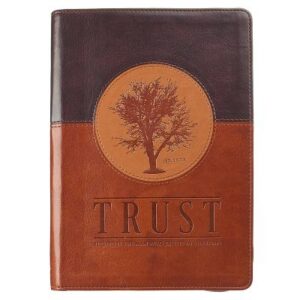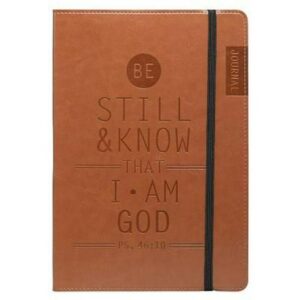Setting Up for the U.S. History II Homeschool Curriculum
So, I’ve placed my children, had my Heart of Dakota ‘box day,’ and am setting up for high school U.S. History II (USII). My first step is to read through USII’s Introduction/Overview, Appendix, and first week or month of plans. This helps me envision my year and understand what my guide covers. Each high school credit includes its own specific course description, required resources, course materials, and suggested grading. So, taking time to read through these is time well spent.
Setting Up the Front of My U.S. History II Binder
First, I slide the preprinted full color U.S History II Journal cover in the front of my 1 1/2 inch three-ring binder. Second, I print the Overview of the guide off the Internet (click here). I use the Table of Contents as my attendance record, noting the dates we completed each unit (i.e. Unit 1: Sept. 2-6, 2019).
Likewise, I include the Earning Credits and Possible Grading Scale in my binder to show how credit was earned. Third, I print the first week of plans (click here), which is a nice overview. Some states require a completed portfolio for meeting with a principal or umbrella school. The Introduction and first week of plans give an excellent overview for this. (Carrie gives permission for the Introduction and First Week of Plans to be printed or copied for portfolio compilation. However, any other photocopies or retyping of plans would be a copyright infringement.)
Setting Up the Rest of My U.S. History II Binder
I continue setting up the rest of my U.S. History II binder. Behind the First Week of Plans, I place USII’s notebook pages inside clear page protectors. Throughout the homeschool year, my student takes out each notebook page he is using for the week. Then, when he is done with each page, he simply puts it back in a page protector for safe keeping. This makes a beautiful keepsake of our year of spent doing U.S. History II!
Preparing for the Living Library Extra Credit Work
If my student is doing the U.S. History II (USII) Living Library 10% extra credit option (which is an option I personally love for my children to do), from the USII Appendix, I photocopy the “Triple-Entry Journal Assignment” sheet. I have my student glue it in the front of a bound and lined composition book of his choice. This way, he can refer to the example to know the format expected for his journal assignments. I simply keep the notebook with his completed triple-entry journal assignments on hand as a record of his extra credit work for the year.
Setting Up the Book of Centuries’ Binder
For the Book of Centuries (BOC), the USII Introduction suggests using a 1 inch three-ring binder. This already comes preprinted and three-hole punched. So, I just slide the preprinted full color BOC Notebook cover in the front of my binder. Then, I place the three-hole punched BOC pages in the binder. (If you used WG, WH, and/or U.S. the years before, you’ve already done this step). Then, I add the extra pages needed for USII.
As many different BOC pages are used at a time and there is gluing involved, I don’t put these in clear page protectors. Next, following the “Course Materials” section in the USII Introduction, I print the U.S. History II Timeline Figures from the Timeline Figures CD. I put these in a pile in order and staple the top left corner to keep them together. Last, I slide the stapled together timeline pages inside the front of my BOC binder’s pocket.
A Few Other Noteworthy Things About Setting Up for the U.S History II Course
Throughout the year, my student follows the USII daily plans to make photocopies for Key Decisions in U.S. History: Volume 2 and from Great Documents from U.S. History: Volume II. I help with making these copies the first time they come up in the plans. Then, my student follows the directions to do this on his own. We file his completed maps in the back of his U.S History II journal.
I also let my student know he will need a DVD player for The American Testimony DVD Set 2. He will also need about thirty-seven (I like a few extra) 3″ x 5″ index cards for the Talking Points assignments. Likewise, he will need a yellow highlighter and a pink or green highlighter (or small yellow and pink or green sticky notes) for his key word narrations.
Getting Ready for Bible
For Bible, students keep a prayer journal. Any bound book with lined pages can be used. We found some beautiful options at our local Christian bookstore! (If your student completed WG, WH, and/or U.S.I, he already has a prayer journal.) Next, I photocopy the “Prayer Journal Insert” from the Appendix of the U.S. History II guide. I have my student fold this and put it inside his Prayer Journal cover. Students also need their own Bible to look up Scriptures each day.
So, enjoy choosing whichever Bible you and your student would like best. Finally, I download and print the I Don’t Have Enough Faith to Be an Atheist Curriculum: Answer Key. I three-hole punch these and place them in a 1/2 inch three-ring binder.
Getting Ready for English IV and Speech
For Speech, I print the needed pages from the Secrets of Great Communicators: Teacher’s Guide CD from the PDF_Files folder. I three-hole punch these and put them in a 1/2″ three-ring binder. For English IV, I use either 3 bound and lined composition books (1 for English Grammar, 1 for Dictation, and 1 for Speech), OR I use 1 large bound and lined composition book with 3 section dividers (1 for English Grammar, 1 for Dictation, and 1 for Speech). I also choose a bound journal with lined pages for my student to use as his Literature Journal.
Likewise, we choose a Common Place Book. Any keepsake-like bound, composition book with lines to copy memorable passages throughout the high school years can be chosen. Walmart had many lovely, inexpensive options for these! Finally, I have a DVD player handy for the Literature DVDs and the Speech DVD.



Getting Ready for Economics and Finance
For Economics, I get 1 bound and lined composition book and label it “Economics.” If I want to remove the answer key from the back of Intro to Economics: Money, History, & Fiscal Faith, I remove it and put it in a folder. I print the Constitutional Literacy Answer Key to Workbook Questions, 3-hole punch them, and put them in a 1/2 inch three-ring binder.
For Finance, I show my student how to print the activity and assessment pages from the Foundations in Personal Finance: Teacher Resources CD as it comes up in the plans. However, I do print the Fill-ins Answer Keys, the Chapter Summary Answers, and Money in Review answers. I three-hole punch these and put them in a 1″ binder. Likewise, I have folder for my student’s Finance activity pages and assessments. We plan to have a DVD player handy for the Economics and Finance DVDs.
Getting Ready for Foreign Language
For Spanish II, I plan for my student to listen and practice with assigned Spanish CD tracks as scheduled in the Spanish II: Student Books. Likewise, I use the Spanish II: Teacher’s Guide “Audio Scripts” section to help my student write the assigned audio CD number and Track number on the blank next to each CD icon in each unit of each Student book. I might do this as it comes up in the plans, or all at the beginning of the year, whichever I prefer. For Latin/Greek, I bookmark the Internet site for Getting Started with Latin on our computer. I also plan to have a DVD player handy for the lessons from It’s Not Greek to Me DVD.
Getting Ready for Science and Math
For Astronomy/Geology/Paleontology, I get a bound and lined composition book for my student and label it “Science.” Next, if I am dong the lab, I gather all needed “Materials Not Included” in the lab kit noted in the Astronomy and Geology Lab Manual. If I want to remove the answer key from the back of the Survey of Astronomy: Teacher’s Guide, I remove it and put it in a folder or small binder. I plan to have a DVD player handy for the science DVDs as well. For Math, I gather whatever special materials are noted in the course I chose.
Thoughts on Record Keeping
For high school, I keep my student’s completed notebooks, binders, and workbooks. I put these all in order on a shelf each year, along with the checked off Heart of Dakota guide itself. Together these create a detailed record of the work that has been done to earn credit. Using www.transcriptmaker.com, I create my student’s transcript. I also keep on file any required paperwork for my state, such as approved homeschool exemption forms and completed standardized test results. Each state can vary slightly in requirements for homeschooling, so be sure to check out your own state’s requirements at www.hslda.com.
Label Sticky Tabs to Mark Places in the U.S. History II Guide
Next, I label sticky tabs to mark places in my guide. I label the first tab “DAILY PLANS,” placing it on Unit 1, Day 1. If you are going to do things more as they come up in the plans, rather than how I’ve previously described setting up for U.S. History II, then you would also want to make sticky tabs for “TRIPLE-ENTRY JOURNAL,” “PRAYER JOURNAL,” and “DICTATION,” placing them in the USII guide’s Appendix. One final thing I liked to do is make a photocopy of the Narration Tips, Written Narration Tips, and Written Narration Skills. Carrie does give permission to photocopy these. I keep these lists for me and for my student to reference throughout the year. However, you can just put another tab in USII’s Appendix for “NARRATION TIPS,” if you’d rather.
Shopping for Supplies
Carrie’s plans use readily available household supplies, and many options are suggested. However, to get ready to begin USI, I just stock up on usual art supplies – like colored pencils, thick and thin markers, a few permanent markers and high-lighters, glue (sticks and liquid), scissors, construction paper, tape (masking and clear), a ruler, a yardstick, sticky notes/tabs, paints/paintbrushes, cotton balls, yarn/string, etc. I also stock up on index cards and page protectors. Finally, a flashlight, paperclips, marker board with dry erase markers, and q-tips/toothpicks are also nice to have on hand.
Sorting Resources into “Things We Need Now” and “Things We Need Later” Bins or Totes
One of the last things I do is get two canvas bins. I use one for ‘things we need now’ and the other for ‘things we need later.’ As I read through each box of my first week of U.S. History I’s plans, I put each needed resource in the bin for ‘things we need now.’ I put the remaining items in the bin for ‘things we need later.’ Throughout the year as we finish using resources, I put them in the back of the ‘things we need later’ bin, and I move the next books or resources we need into the ‘things we need now’ bin or tub. This way, my ‘things we need now’ bin only contains what we need for each week. Another benefit is the ‘things we need now’ are always mobile! Likewise, I put many art supplies in a tool turnabout, so these are mobile too!
In Christ,
Julie



